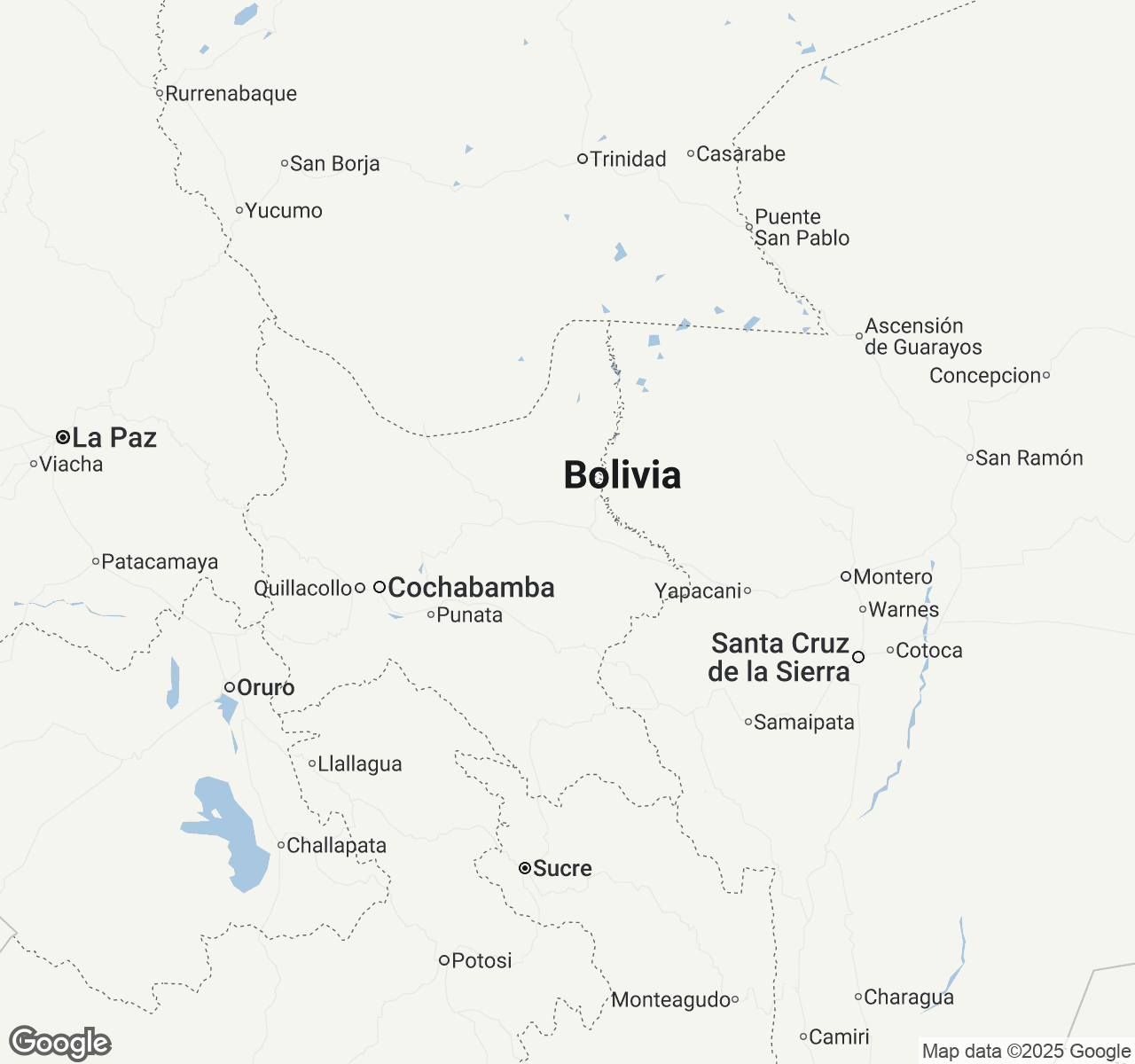
Things to Do in Bolivia
Discover the best of Bolivia
Plan Your Trip
Essential guides for timing and budgeting
Top Things to Do in Bolivia
Discover the best activities and experiences. Book now with our trusted partners and enjoy hassle-free adventures.
Explore Destinations in Bolivia
Cochabamba
City
Copacabana
City
Coroico
City
Isla Del Sol
City
La Paz
City
Madidi National Park
City
Oruro
City
Potosí
City
Rurrenabaque
City
Salar De Uyuni
City
Samaipata
City
Santa Cruz De La Sierra
City
Sucre
City
Tarija
City
Torotoro National Park
City
Tupiza
City
Your Guide to Bolivia
About Bolivia
Where the sky touches earth at impossible heights and ancient Andean wisdom whispers through cobblestone streets, Bolivia unfolds like a living tapestry of extremes. Here, flamingos dance across mirror-like salt flats that stretch beyond horizons, while indigenous markets burst with colors that seem borrowed from dreams. The air itself tells stories—thin and crystalline in La Paz, where bowler-hatted cholitas navigate steep streets with graceful determination, and warm with jungle mystery in the Amazon lowlands. This is a land where time moves differently, where the spiritual and practical intertwine easyly, and where every journey becomes a pilgrimage through landscapes so surreal they challenge belief. From the world's highest capital city to the ethereal beauty of the Salar de Uyuni, Bolivia invites travelers not just to visit, but to surrender to its profound magic and emerge transformed by encounters with one of South America's most authentic and untouched souls.
Travel Tips
Transportation: Book domestic flights early as routes are limited and weather-dependent. For overland travel, choose reputable bus companies like Trans Copacabana or Bolivar for safety. Always carry motion sickness remedies—mountain roads are winding and high-altitude affects many travelers.
Money: Bring US dollars in excellent condition (no tears or marks) as bolivianos are hard to exchange outside Bolivia. ATMs are scarce outside major cities, so withdraw cash in La Paz or Santa Cruz. Credit cards work in upscale establishments only.
Cultural Respect: Never photograph people without permission—many indigenous communities consider it disrespectful. Learn basic Spanish greetings and always ask '¿Puedo tomar una foto?' Address elderly people formally with 'usted' and avoid pointing with your index finger; use an open hand instead.
Food Safety: Stick to bottled or boiled water above 3,500m elevation. Try local specialties like salteñas (meat pastries) from busy stalls with high turnover. Avoid raw vegetables at street vendors but embrace coca tea—it helps with altitude sickness and is culturally significant.
When to Visit
Bolivia's dramatic geography creates distinct seasonal patterns across its regions. The dry season (May-October) offers the best overall conditions, with clear skies, minimal rainfall (less than 10mm monthly), and temperatures ranging from 15-25°C in valleys to -10°C in highlands. This peak season sees 40-60% higher prices for accommodations and tours, especially June-August. The Salar de Uyuni transforms into a perfect mirror during rainy season (December-March), when temperatures rise to 20-30°C but daily downpours (100-200mm monthly) can strand travelers. Adventure seekers should visit May-September for trekking and climbing, while wildlife enthusiasts prefer September-November when animals are most active. Key festivals include Carnaval de Oruro (February/March), Alasitas Fair (January 24), and Inti Raymi (June 21). Shoulder seasons (April and November) offer 20-30% savings with decent weather. Budget travelers benefit from rainy season discounts up to 50%, but expect transportation delays. High-altitude destinations like La Paz and Potosí are coldest June-August (nighttime temperatures to -15°C), while eastern lowlands remain warm year-round. Book Salar de Uyuni tours months ahead regardless of season—this otherworldly destination remains Bolivia's crown jewel in any weather.

Bolivia location map